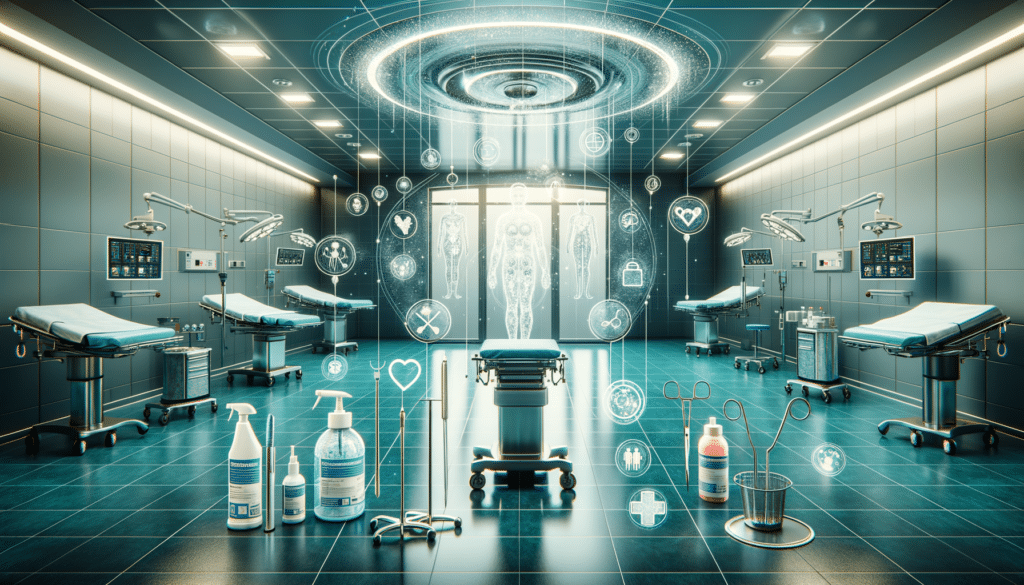The Importance of Hospital Cleaning
Hospital cleaning is a crucial component in maintaining the health and safety of both patients and staff. In healthcare settings, where the risk of infection is significantly heightened, effective cleaning practices are essential. A clean hospital environment helps prevent the spread of infections, ensuring that patients recover in a safe setting and that healthcare workers are protected from potential hazards.
Effective hospital cleaning involves more than just surface cleanliness; it requires a comprehensive approach to hygiene that includes sanitizing equipment, maintaining air quality, and managing waste properly. These measures help to minimize the risk of hospital-acquired infections (HAIs), which can lead to prolonged hospital stays, increased healthcare costs, and, in severe cases, patient mortality.
Key aspects of hospital cleaning include:
- Sanitization: Regular sanitization of high-touch surfaces like doorknobs, bed rails, and medical equipment is vital.
- Waste Management: Proper disposal of hazardous waste is crucial in preventing contamination.
- Air Quality Control: Ensuring good ventilation and air filtration reduces airborne pathogens.
By adhering to stringent cleaning protocols, hospitals can create a safer environment that promotes healing and reduces the risk of infection spread.
Challenges in Hospital Cleaning
Despite its importance, hospital cleaning faces several challenges. One of the primary issues is the high turnover of patients and staff, which increases the potential for contamination. Additionally, the presence of multidrug-resistant organisms (MDROs) in healthcare settings poses a significant challenge, as these pathogens require specialized cleaning agents and techniques to eliminate.
Another challenge is the need for continuous training and education of cleaning staff. Given the complexity of hospital environments, cleaning personnel must be well-versed in the latest cleaning technologies and infection control practices. This requires ongoing investment in training programs to ensure that staff can effectively implement cleaning protocols.
Moreover, budget constraints can impact the quality of cleaning services. Hospitals must balance the need for rigorous cleaning with financial limitations, which can sometimes result in reduced cleaning frequencies or the use of less effective cleaning agents.
Addressing these challenges requires a coordinated effort from hospital administration, cleaning staff, and healthcare professionals to ensure that cleaning practices remain effective and up-to-date.
Innovative Cleaning Technologies
Advancements in technology have introduced innovative solutions to improve hospital cleaning practices. One such innovation is the use of ultraviolet (UV) light technology, which can effectively kill bacteria and viruses on surfaces. UV light devices are increasingly being used in hospitals to disinfect patient rooms and operating theaters, providing an additional layer of protection against infections.
Another promising technology is the use of electrostatic sprayers, which apply disinfectants more evenly and efficiently than traditional methods. This technology ensures that all surfaces, including hard-to-reach areas, are adequately disinfected, reducing the risk of contamination.
Robotics is also making its way into hospital cleaning, with autonomous robots capable of performing routine cleaning tasks. These robots can operate independently, freeing up human staff to focus on more complex cleaning duties. Additionally, robots equipped with sensors and AI can identify areas that require more attention, enhancing the overall effectiveness of cleaning operations.
By embracing these technologies, hospitals can enhance their cleaning protocols, ensuring a safer environment for patients and staff.
Best Practices in Hospital Cleaning
Implementing best practices in hospital cleaning is essential for maintaining high standards of hygiene and safety. One of the fundamental practices is the development of a comprehensive cleaning schedule that outlines the frequency and methods for cleaning different areas of the hospital. This schedule should be tailored to the specific needs of each facility, taking into account factors such as patient turnover, the presence of infectious diseases, and the types of medical procedures performed.
Another best practice is the use of standardized cleaning protocols. These protocols provide clear guidelines for cleaning staff, ensuring consistency and effectiveness in cleaning operations. Protocols should be regularly reviewed and updated to incorporate the latest research and technological advancements in infection control.
Effective communication and collaboration between cleaning staff and healthcare professionals are also critical. By working together, these teams can identify high-risk areas and prioritize cleaning efforts accordingly. Regular feedback and assessment of cleaning practices can further enhance the quality and efficiency of cleaning services.
By adhering to these best practices, hospitals can maintain a clean and safe environment that supports patient recovery and protects healthcare workers.
The Future of Hospital Cleaning
The future of hospital cleaning is likely to be shaped by ongoing advancements in technology and a growing emphasis on sustainability. As hospitals seek to reduce their environmental footprint, there is an increasing focus on using eco-friendly cleaning products and practices. These products are designed to minimize environmental impact while still providing effective disinfection.
Additionally, the integration of data analytics into cleaning operations is expected to enhance efficiency and effectiveness. By analyzing data on cleaning practices and infection rates, hospitals can identify trends and areas for improvement, allowing for more targeted and efficient cleaning strategies.
The role of cleaning staff is also evolving, with a greater emphasis on training and professional development. As cleaning technologies become more sophisticated, staff will need to be equipped with the skills and knowledge to operate these technologies effectively.
Overall, the future of hospital cleaning promises to be one of innovation and collaboration, with a focus on creating safer and more sustainable healthcare environments.





